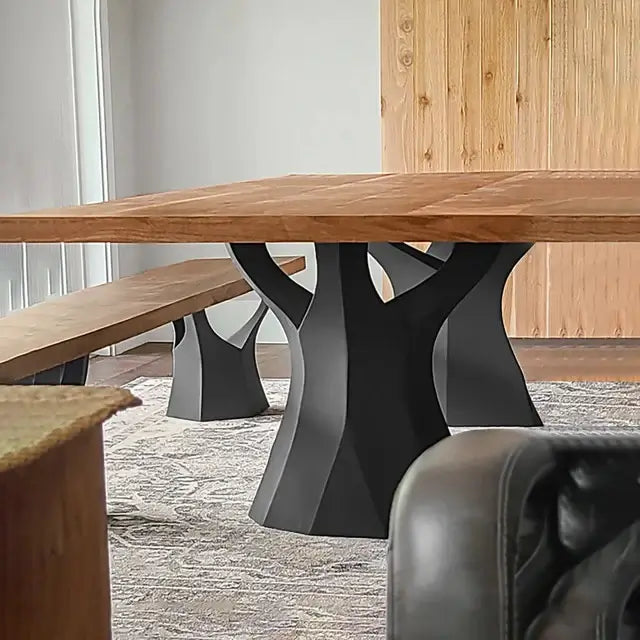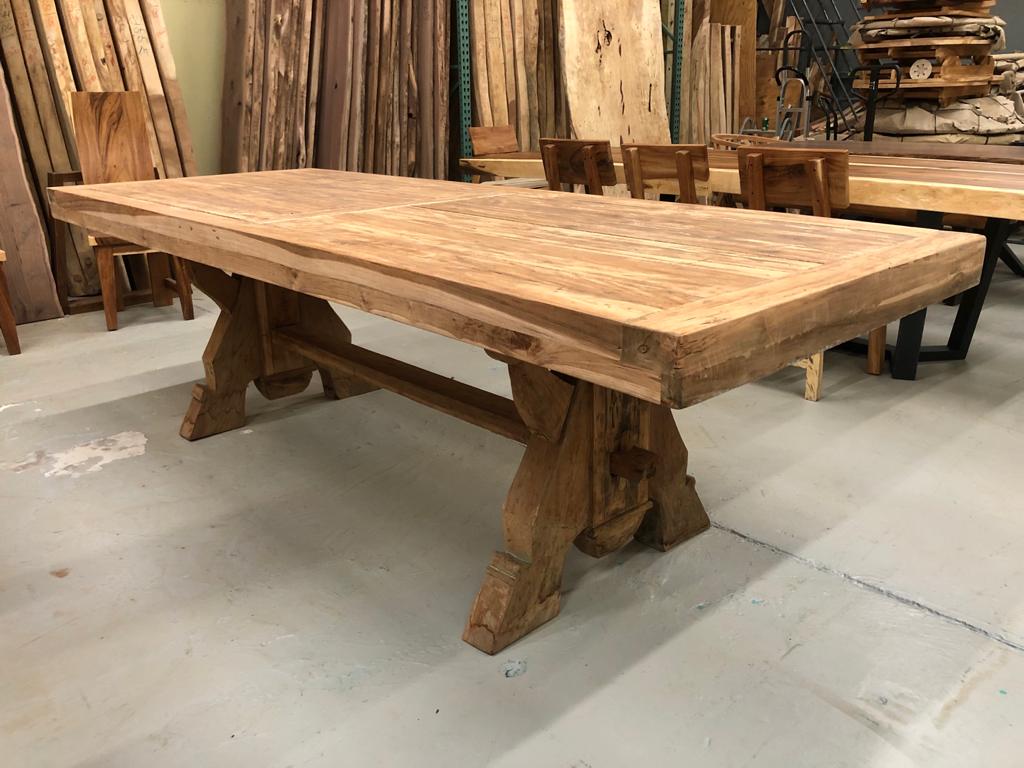Necessary Considerations for Picking the Right Dining Table Legs Timber
Selecting the proper timber for dining table legs entails a nuanced understanding of various aspects that influence both performance and visual appeal. The option of timber type, varying from durable hardwoods to extra delicate softwoods, plays an essential duty in guaranteeing longevity and stability. Furthermore, factors to consider concerning spending plan, layout, and maintenance must be thoroughly evaluated. Each of these elements can drastically influence the overall experience of your dining area. Comprehending how these aspects relate is essential for making an informed decision that satisfies your particular requirements and choices - Dining Table Legs Wood. What factors to consider will you focus on in your option procedure?
Value of Wood Type

Hardwoods, such as walnut, maple, and oak, are commonly liked for their toughness and resistance to put on. These kinds of timber supply a robust foundation that can endure daily use, making them ideal for eating tables that experience constant celebrations. On the other hand, softer woods like yearn may be more susceptible to scrapes and dents, which may not be ideal for high-traffic locations.
Additionally, the option of wood can also influence the simplicity of maintenance. Some woods require normal oiling or securing to protect their appearance, while others might be a lot more forgiving. Inevitably, choosing the suitable wood kind includes balancing visual considerations with practical needs, guaranteeing that the dining table legs not just look attractive yet likewise stand the test of time.
Analyzing Security and Strength
When examining dining table legs, one have to think about the stability and stamina they provide to the total structure. The legs are critical in sustaining the table top and making sure the dining experience is satisfying and safe. A steady table is important for protecting against wobbling or tipping, which can lead to spills or mishaps throughout meals.
The selection of wood type dramatically affects toughness. Woods such as oak, maple, and walnut are normally more robust and sturdy than softwoods like yearn or fir. Furthermore, the density and layout of the legs play an important duty; thicker legs or those with a conical design can provide much better support and security.

Visual Considerations
While performance is extremely important, the aesthetic charm of table legs can not be overlooked, as they considerably affect the total design and atmosphere of the eating room. The option of style, coating, and timber can detract or improve from the table's aesthetic influence.

Finishes likewise play a crucial function in looks. An all-natural finish can highlight the wood's innate elegance, while painted or discolored legs can present shade and character right into the area. Additionally, the percentage and range of the legs loved one to the table top and surrounding furnishings has to be taken into consideration to make certain visual equilibrium and communication.
Ultimately, the table legs must not only serve a functional purpose yet additionally add to a natural and welcoming atmosphere, making them a vital factor to consider in the overall design of the eating area.
Upkeep Requirements
To make sure long life and protect the appeal of wood eating table legs, regular upkeep is vital (Dining Table Legs Wood). Wood is an all-natural material that can be at risk to damage from dampness, warm, and wear. Developing a regular treatment strategy will dramatically boost the sturdiness of your dining table legs.
Begin with routine dusting utilizing a soft, lint-free cloth to remove dust and particles that can damage the surface area. For even more complete cleansing, use a mild soap remedy and damp fabric, preventing excess dampness that go to this website could permeate right into the wood. It is recommended to use a high-quality timber polish or conditioner every few months to nurture the wood and keep its luster.
Deal with any dents or scrapes quickly with suitable timber filler or touch-up pens to avoid additional deterioration. By adhering to these maintenance needs, you will certainly not only maintain the aesthetic charm of your wooden eating table legs yet likewise extend their functional lifespan.
Budget Plan and Expense Factors
Budget plan and price aspects frequently play a critical function in the decision-making process for choosing wooden table legs. When evaluating alternatives, it is vital to establish a clear budget that straightens with your overall furniture financial investment. The expense of wooden eating table legs can differ significantly based on the sort of craftsmanship, wood, and layout complexity.
Hardwoods such as cherry, walnut, and oak typically regulate greater costs due to their sturdiness and aesthetic appeal. On the other hand, softer timbers like pine might be a lot more budget-friendly but might not supply the exact same longevity. Additionally, personalized or artisan-crafted legs can sustain additional costs, mirroring the review ability and time bought their development.
It is also essential to consider the potential long-lasting value of your investment. While choosing for lower-cost products may appear financially sensible initially, they may call for more frequent substitute or repair work, ultimately raising general expenditure.
Therefore, balancing high quality and price is essential. Focus on materials that fulfill your visual preferences while guaranteeing they fit easily within your budget, permitting you to develop a dining location that is both practical and aesthetically enticing.
Conclusion
To conclude, choosing the ideal wood for dining table legs requires mindful factor to consider of different factors, including timber type, security, looks, upkeep, and spending plan. Hardwoods such as oak and walnut offer premium sturdiness and stamina, click here for more info while style and density add to general stability. Visual charm and maintenance demands need to align with individual choices and lifestyle. Inevitably, a knowledgeable choice will enhance the longevity and aesthetic appeal of the table, guaranteeing contentment and functionality for several years ahead.
Choosing the right type of timber for dining table legs is critical for both visual appeal and structural integrity. Ultimately, selecting the appropriate wood kind involves balancing visual considerations with practical needs, making sure that the dining table legs not only look appealing yet additionally stand the test of time.
It is recommended to apply a top quality timber gloss or conditioner every few months to nurture the wood and maintain its gloss.
The price of wooden eating table legs can vary considerably based on the kind of wood, layout, and workmanship intricacy.
In final thought, selecting the proper wood for eating table legs requires mindful consideration of numerous aspects, including wood type, stability, aesthetic appeals, maintenance, and budget plan.